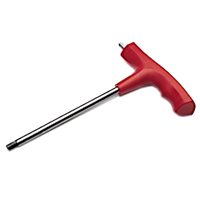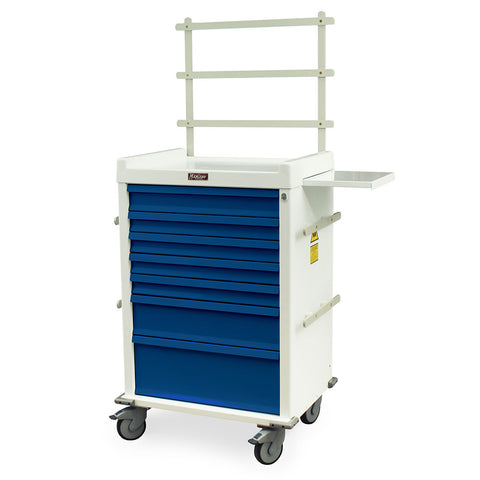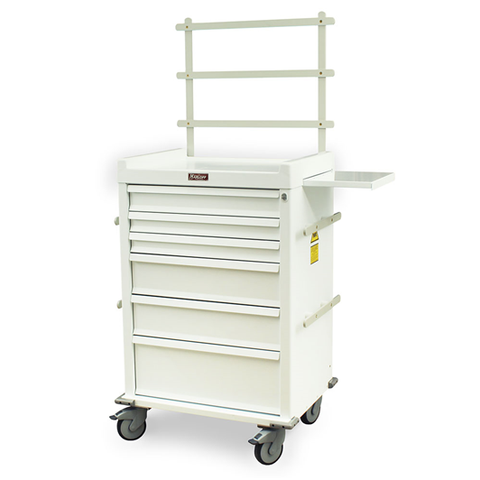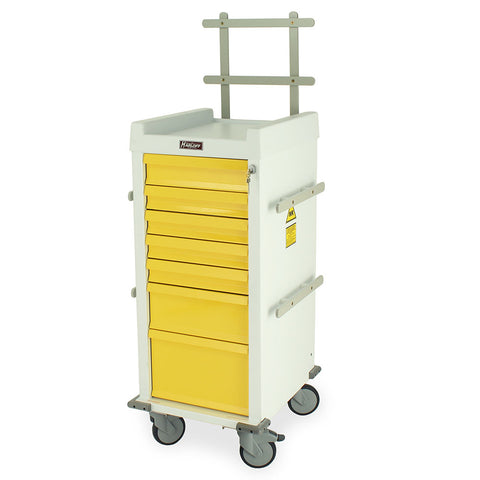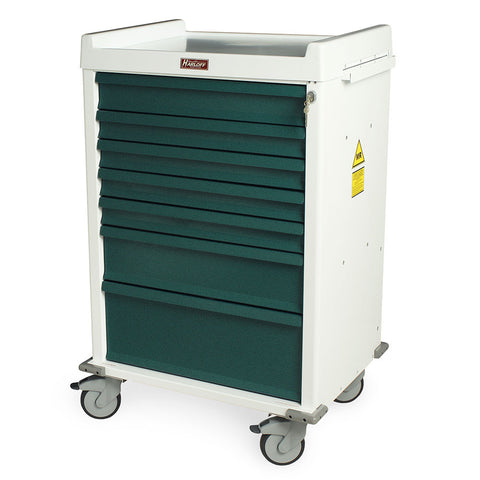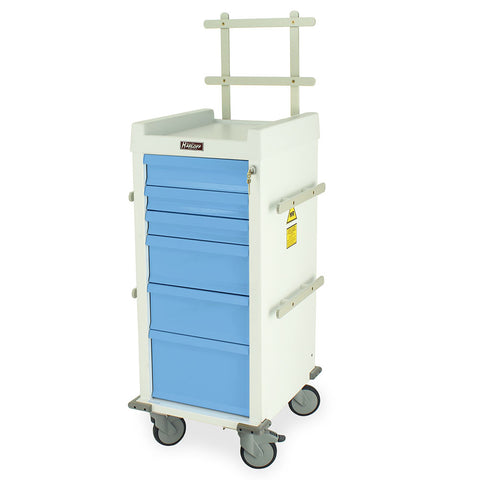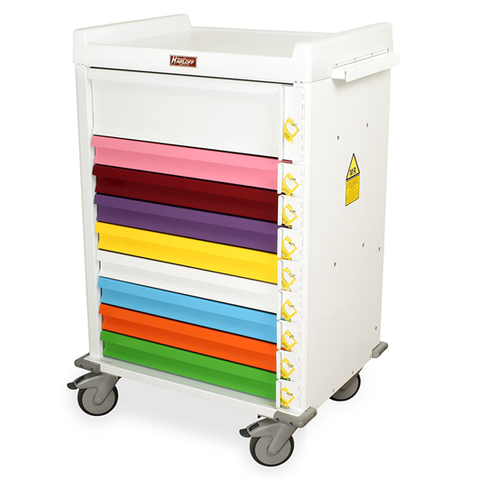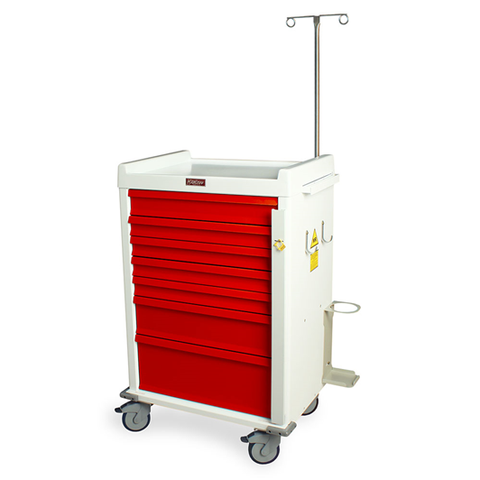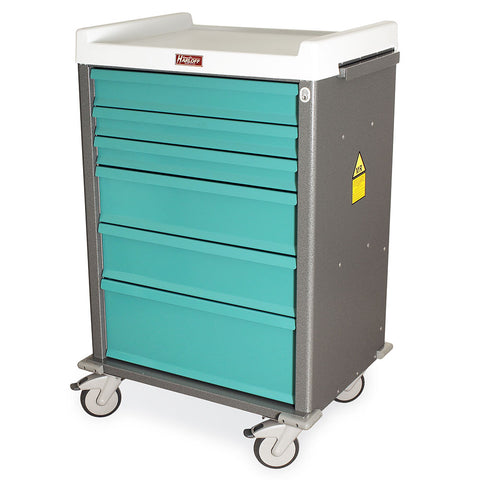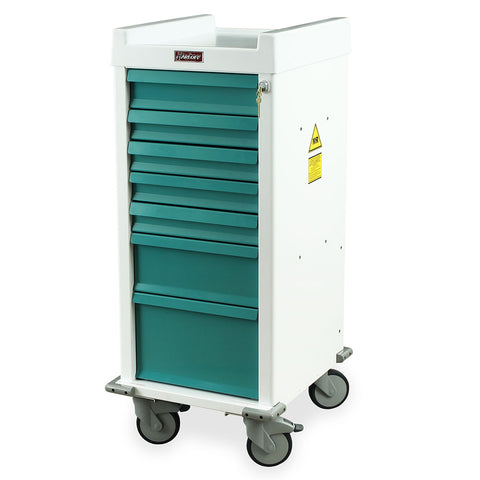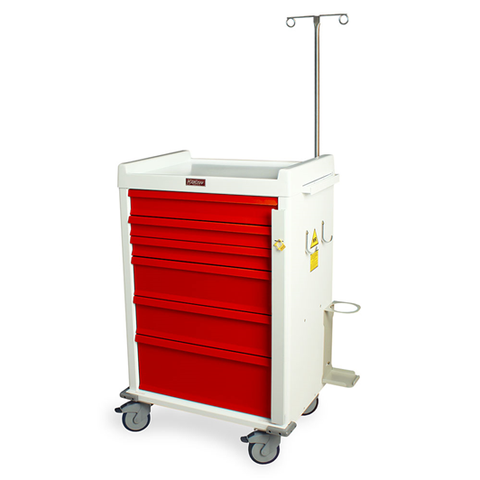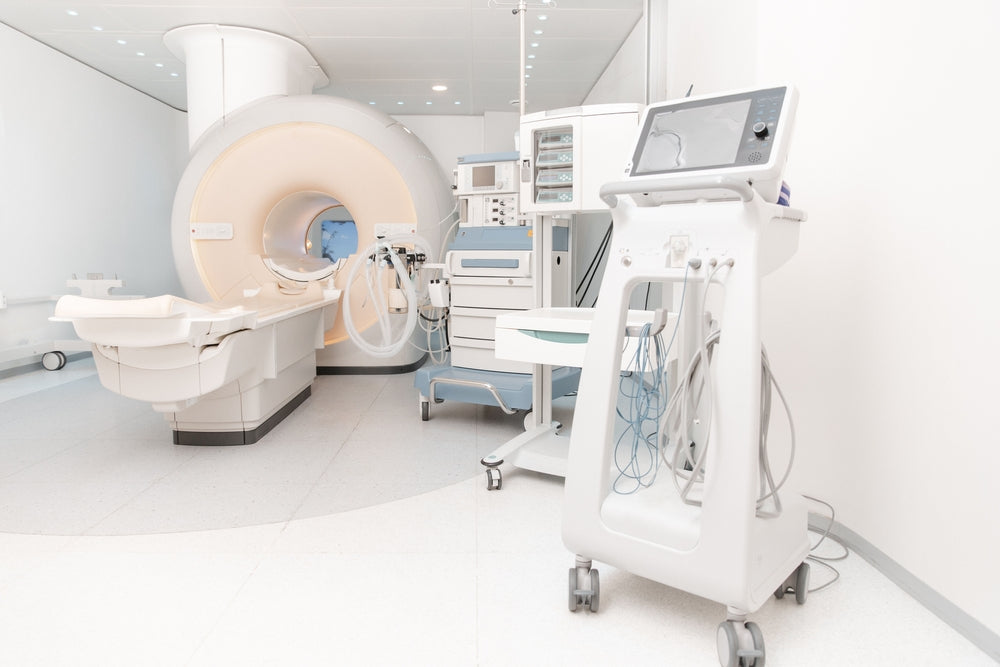
MRI suites require specialized equipment to ensure patient safety, protect staff, and maintain high-quality imaging. Non-magnetic or MR Conditional devices are essential in preventing accidents, injuries, and interference with MRI scans. This guide provides a comprehensive overview of non-magnetic equipment, including patient transport devices, monitoring systems, surgical tools, and support equipment. All products referenced are available through MRI Med.
Introduction to Non-Magnetic Equipment in MRI Suites
Why MRI-Conditional Equipment Matters
MRI scanners generate strong magnetic fields that can pull in ferromagnetic objects with significant force, posing a danger to patients and staff. MR Conditional equipment is specifically tested and certified to operate safely within defined MRI environments. This ensures that devices such as stretchers, wheelchairs, and IV poles will not interfere with the MRI’s operation or compromise patient safety. Using MR Conditional equipment is not just a best practice; it is an essential component of regulatory compliance in healthcare facilities.
Non-magnetic equipment from MRI Med is designed to meet these requirements, offering peace of mind for radiology departments.
Understanding MR Safe, MR Conditional, and MR Unsafe Labels
The current ASTM terminology classifies equipment as MR Safe, MR Conditional, or MR Unsafe.
-
MR Safe: Items that pose no known hazards in all MRI environments, such as non-metallic accessories or plastic devices.
-
MR Conditional: Devices that are safe under specific MRI conditions, including field strength, RF exposure, and device configuration.
-
MR Unsafe: Objects known to pose hazards in all MRI settings, such as ferromagnetic scissors or standard hospital stretchers.
Understanding these labels is critical when selecting equipment for MRI suites to prevent accidents and maintain scan quality.
Common Risks of Using Ferromagnetic Equipment
Using non-MR equipment in MRI rooms can result in severe injuries and costly equipment damage. Common risks include projectile incidents, burns from induced currents, compromised imaging quality, and interference with life-support devices. Hospitals that fail to adhere to MR safety protocols may also face liability and regulatory consequences.
Non-Magnetic Patient Transport Devices
MRI-Conditional Stretchers and Gurneys
Transporting patients safely within MRI suites requires specialized stretchers. Products such as the Adjustable Height MRI Med Stretcher are built from non-magnetic materials and meet MR Conditional safety standards. These stretchers feature adjustable height, secure restraints, and smooth maneuverability, ensuring both patient comfort and operational efficiency.
MRI-Conditional Wheelchairs
Wheelchairs used in MRI environments must also be non-magnetic. MRI Med’s Non-Ferrous Wheelchairs are designed to allow safe patient transfers while avoiding interference with the MRI’s magnetic field. Features include lightweight frames, MR Safe wheels, and compatibility with standard MRI table heights.
Patient Transfer Boards and Slides
Patient transfer boards help move patients safely from stretchers to MRI tables without compromising MR safety. MRI Med provides non-magnetic transfer boards that are lightweight, durable, and easy to clean, ensuring smooth transitions in Zone IV MRI rooms.
Non-Magnetic Monitoring and Support Equipment
MR Safe IV Poles and Infusion Stands
IV poles must be MR Conditional to prevent accidents. MRI Med’s IV Poles for MRI Suites are constructed from aluminum and PVC, ensuring they do not become projectiles while remaining sturdy for patient support.
Patient Monitors and Vital Sign Equipment
Monitoring patients during MRI scans is essential. Non-magnetic patient monitors from MRI Med allow staff to track vital signs without introducing ferromagnetic risks. All monitors are tested to MR Conditional specifications and can safely remain in MRI Zone IV.
MR Conditional Oxygen Tanks and Respiratory Devices
Oxygen delivery in MRI environments requires careful equipment selection. MRI Med’s MR Conditional oxygen tanks and respiratory devices are non-ferromagnetic, lightweight, and designed for safe use during imaging procedures.
Non-Magnetic Surgical and Procedure Tools
MR Safe Surgical Instruments
Certain procedures within or near MRI rooms require MR Safe surgical instruments. MRI Med offers non-magnetic surgical sets that meet ASTM F2503 standards, ensuring they can be safely used without interfering with magnetic fields.
Non-Magnetic Diagnostic Tools
Diagnostic tools such as portable ultrasound probes and stethoscopes must also be MR Conditional. MRI Med provides a range of non-magnetic diagnostic devices for safe use within MRI environments.
Accessories and Attachments Compatible with MRI
Attachments such as IV clamps, safety rails, and restraint systems are often overlooked but must be MR Conditional. MRI Med’s accessories are designed to integrate seamlessly with stretchers and patient monitors while maintaining MR safety.
Materials Used in Non-Magnetic Equipment
Aluminum, Titanium, Plastics, and Specialty Alloys
The most common non-magnetic materials include aluminum, titanium, high-strength plastics, and specialized non-ferromagnetic alloys. These materials are chosen for their strength, durability, and non-interference with MRI scanners.
How Materials Are Tested for MR Safety
Each material is tested for displacement forces, torque, RF heating, and artifact creation in MRI environments. MRI Med’s products undergo rigorous testing to confirm MR Conditional compliance.
Durability and Maintenance Considerations
Non-magnetic equipment must also withstand repeated use in clinical settings. MRI Med designs products to be easily cleaned, maintain structural integrity, and provide long-term reliability.
MRI Zone Safety and Equipment Placement
MRI Zone III vs. Zone IV: What Equipment Is Allowed
MRI suites are divided into zones to control access and ensure safety. Zone III allows controlled access to trained personnel, whereas Zone IV houses the scanner. Only MR Conditional or MR Safe equipment is permitted in Zone IV to avoid accidents and interference.
Access Protocols and Workflow Considerations
Effective workflow planning involves staging non-magnetic equipment outside Zone IV, using MRI-safe transport devices, and coordinating staff to minimize risks. MRI Med provides equipment that integrates seamlessly with these workflows.
Best Practices for Equipment Placement in MRI Suites
Proper placement of stretchers, wheelchairs, and monitoring devices ensures patient safety, operational efficiency, and high-quality imaging. MRI Med’s non-magnetic devices are designed for optimal placement flexibility within MRI rooms.
Choosing the Right Non-Magnetic Equipment
Checklist for MRI Suite Equipment Needs
Facilities should evaluate their MRI suite needs, including patient volume, procedure types, and support devices. MRI Med’s full line of non-magnetic products ensures that all essential categories are covered.
Evaluating Vendor Certifications and MR Safety Documentation
When selecting equipment, always verify MR Conditional or MR Safe certification and ASTM F2503 compliance. MRI Med provides full documentation and test results for all products.
Long-Term Value and Operational Efficiency
Investing in MR Conditional equipment reduces accident risks, minimizes downtime, and ensures regulatory compliance. MRI Med’s durable non-magnetic devices provide long-term value for hospitals and imaging centers.
FAQ:
1. Can all hospital equipment be used in an MRI room?
No. Only MR Safe or MR Conditional equipment should be used in Zone IV MRI rooms. Ferromagnetic devices can become projectiles or interfere with imaging.
2. How do I verify that equipment is MR Conditional?
Check the product documentation for ASTM F2503 compliance and MR Conditional labeling. MRI Med products include clear labeling and detailed testing reports.
3. Are non-magnetic devices compatible with all MRI field strengths?
MR Conditional devices are tested under specific field conditions. Always verify compatibility with your scanner’s field strength before use.
4. How should MRI-safe equipment be maintained?
Clean regularly according to manufacturer guidelines, inspect for damage, and verify MR labeling before each use. MRI Med provides maintenance instructions for all products.
5. What should I do if I’m unsure about a device’s MR safety?
Do not use the device until verified. Consult vendor documentation or contact MRI Med for guidance.
Related Articles
